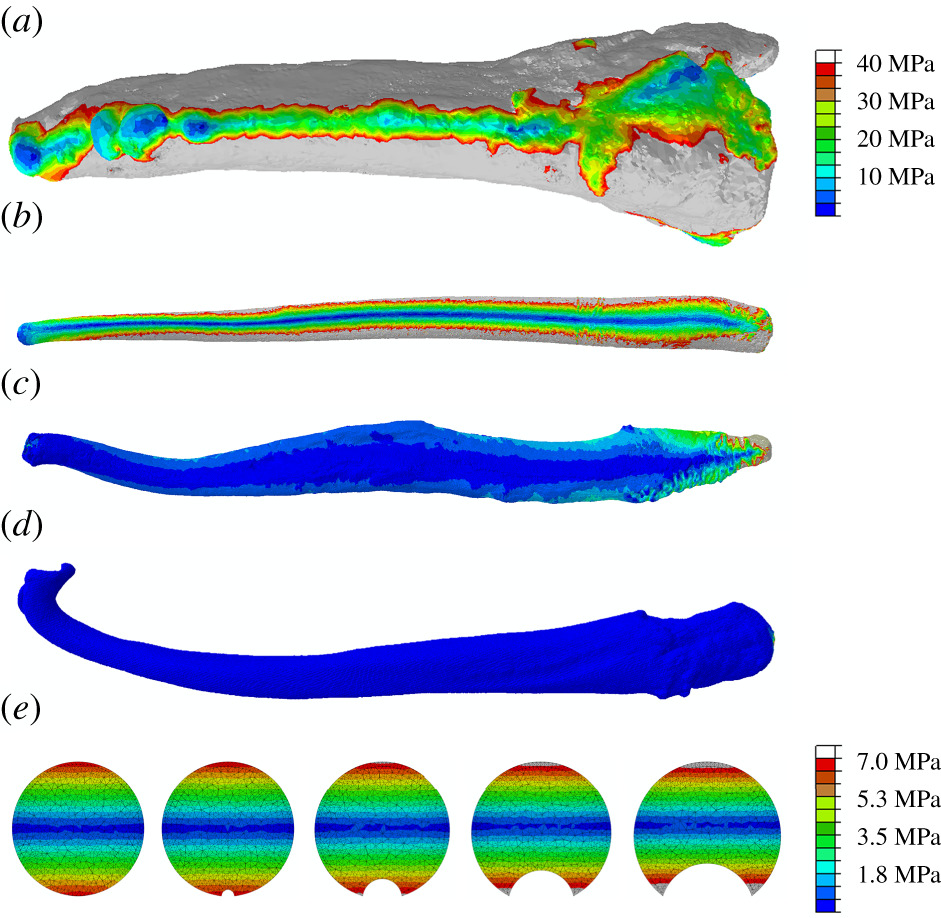Testing hypotheses for the function of the carnivoran baculum using finite-element analysis

The baculum (os penis) is a mineralized bone within the glans of the mammalian penis and is one of the most morphologically diverse structures in the mammal skeleton. (…) For the first time, to our knowledge, we apply a computational simulation approach (finite-element analysis; FEA) to quantify the three-dimensional biomechanical performance of carnivoran bacula (n = 74) based upon high-resolution micro-computed tomography scans. (…) a highly significant negative relationship exists between intromission duration and baculum stress under dorsoventral bending. Furthermore, additional FEA simulations confirm that the presence of a ventral groove would reduce deformation of the urethra. We take this as evidence in support of the ‘prolonged intromission’ hypothesis, suggesting the carnivoran baculum has evolved in response to pressures on the duration of copulation and protection of the urethra.